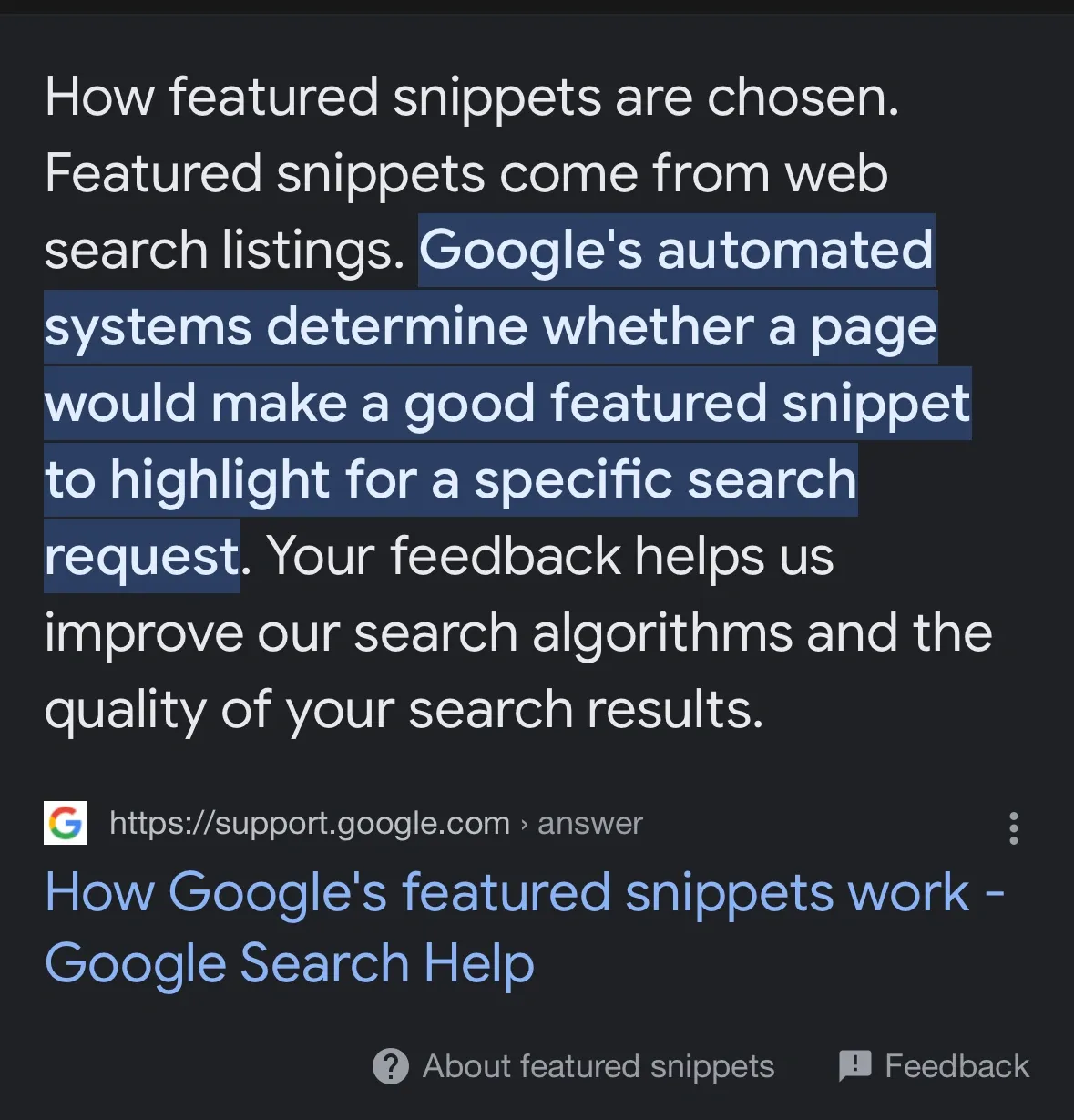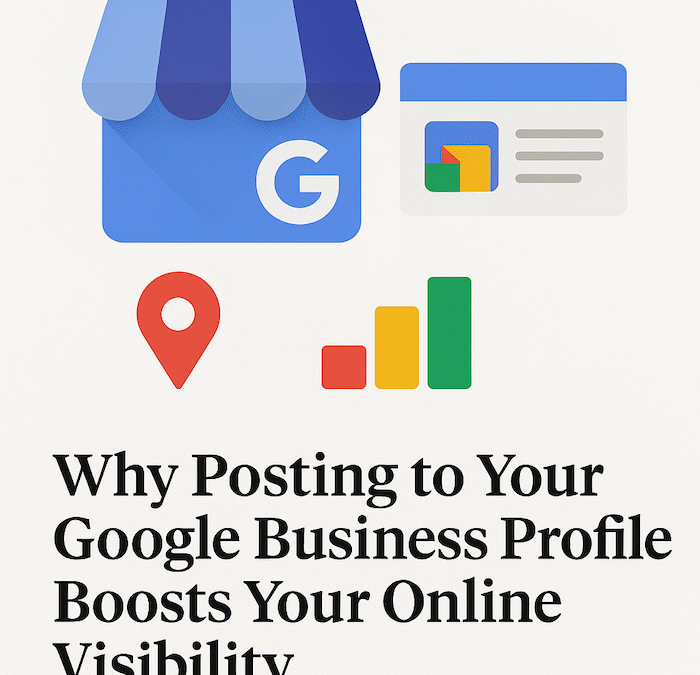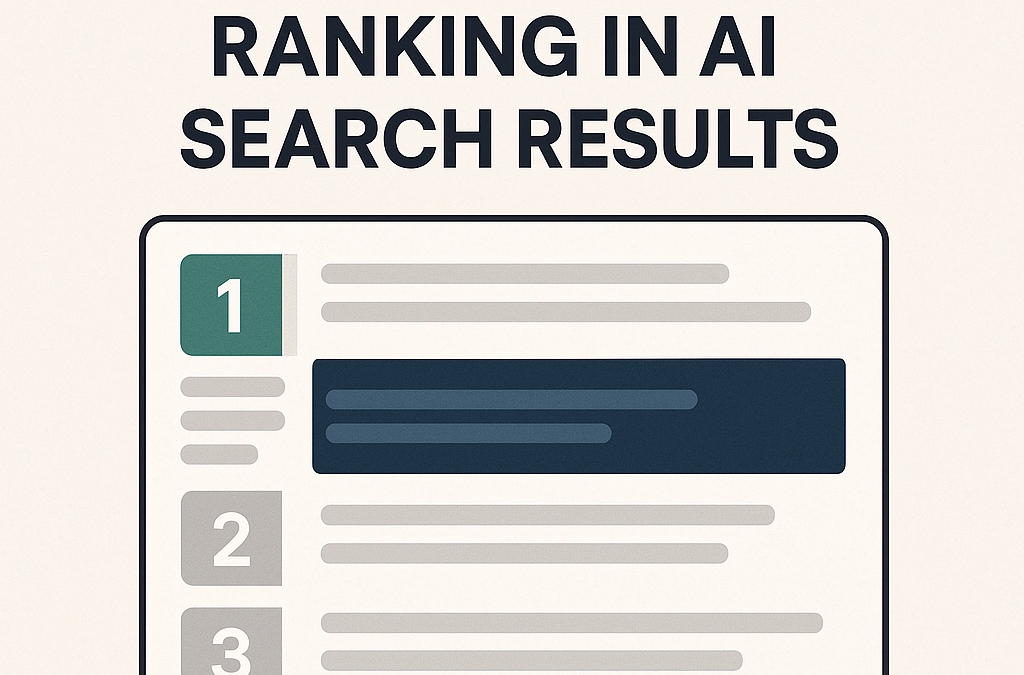Featured snippets are concise answers to search queries that are displayed at the top of Google’s search results, providing a quick and easy way for users to get the information they need. As a result, featured snippets can be a valuable source of organic traffic for websites that manage to get their content featured in them.
Featured snippets typically include a link, page title, and URL, as well as a concise description that relates to the search query. The description is usually about 40-60 words in length, as per SEMrush.
One effective strategy for getting featured snippets is by creating “featured snippet bait” – content designed specifically to entice Google’s algorithms to feature it in a snippet. In this article, we’ll explore what featured snippet bait is, why it’s important, and how to create content that’s more likely to get featured in a Google featured snippet.
What is Featured Snippet Bait?
Featured snippet bait is content that is crafted with the specific goal of getting featured in a Google featured snippet. The goal of featured snippet bait is to provide a concise and authoritative answer to a user’s search query in a way that Google’s algorithms can easily parse and present as a featured snippet.
Featured snippet bait can take many forms, including:
- Lists (e.g., “10 ways to improve your productivity”)
- Tables (e.g., “Calories in common fruits and vegetables”)
- Charts or graphs (e.g., “Average temperatures by month in Los Angeles”)
- Definitions (e.g., “What is a keto diet?”)
- How-to instructions (e.g., “How to make homemade pasta”)
- Q&A format (e.g., “What is the capital of Spain?”)
By creating content that fits into one of these formats, websites can increase their chances of being featured in a Google featured snippet when a user searches for a related query.
Why is Featured Snippet Bait Important?
Getting featured in a Google featured snippet can have a significant impact on a website’s organic search traffic. According to a study by Ahrefs, content that is featured in a snippet can see a click-through rate (CTR) of up to 8.6%, compared to a CTR of just 2.6% for the first organic search result.
Additionally, featured snippets are often displayed above the first organic search result, which means that even if a website is not in the top position for a search query, it can still get valuable exposure by being featured in a snippet.
Finally, because featured snippets provide a quick and easy answer to a user’s search query, they tend to be more focused on satisfying the user’s needs than on driving traffic to a specific website. As a result, websites that provide high-quality featured snippet bait can build trust with users and establish themselves as authorities in their respective fields.
How to Create Featured Snippet Bait
Creating effective featured snippet bait requires a combination of technical know-how and creative content creation skills. Here are some tips for creating content that’s more likely to be featured in a Google featured snippet:
1. Identify Relevant Queries
The first step in creating featured snippet bait is to identify the queries that are most likely to result in a featured snippet. Tools like Ahrefs, SEMrush, and Moz can help you identify high-volume search queries and the featured snippets that are associated with them.
Once you’ve identified the queries you want to target, you can begin crafting content that provides a concise and authoritative answer to those queries.
2. Format Your Content for Snippets
As we mentioned earlier, featured snippets tend to be presented in specific formats, such as lists, tables, and definitions. When creating your content, it’s important to format it in a way that makes it easy for Google’s algorithms to parse and present as a snippet.
For example, if you’re creating a list, use numbered or bulleted lists and make sure each item is concise and easy to read. If you’re creating a table, make sure the data is well-structured and clearly labeled. If you’re creating a definition, make sure it’s clear and concise, with no extraneous information.
By formatting your content in a way that’s easy for Google to parse, you increase your chances of being featured in a snippet.
3. Provide High-Quality Content
While formatting is important, it’s not the only thing that matters when it comes to featured snippet bait. To increase your chances of being featured in a snippet, you also need to provide high-quality content that answers the user’s query in a comprehensive and authoritative way.
This means doing research, providing examples, and citing sources when appropriate. You want to create content that is not only easy to read and understand but also provides real value to the user.
4. Use Structured Data
Structured data is a way of organizing your content so that search engines can better understand it. By using structured data, you can provide additional context and information about your content, which can increase your chances of being featured in a snippet.
For example, if you’re creating a recipe, you can use structured data to provide information about the cooking time, the number of servings, and the ingredients. This can make it easier for Google to present your recipe as a featured snippet.
5. Optimize Your Meta Data
Finally, it’s important to optimize your meta data – the title, description, and URL – to increase your chances of being featured in a snippet. Your meta data should be clear, concise, and accurately reflect the content of your page.
In particular, your title should be formatted in a way that’s likely to be featured in a snippet. This means including the query you’re targeting and using a format that’s likely to be featured, such as a list or table.
Examples of Featured Snippet Bait
To illustrate how featured snippet bait works in practice, here are a few examples of content that is designed to be featured in a Google featured snippet:
Example 1: “How to make a cup of coffee”
This how-to article is designed to be featured in a snippet by providing a concise, step-by-step guide to making a cup of coffee. The article is formatted as a numbered list, with each step clearly labeled and easy to read.
The meta data is also optimized for a featured snippet, with a title that includes the query and a description that provides additional information about the content of the article.
Example 2: “Calories in common fruits and vegetables”
This table is designed to be featured in a snippet by providing a concise, easy-to-read list of the calories in common fruits and vegetables. The table is well-structured, with clear headings and accurate data.
The meta data is also optimized for a featured snippet, with a title that includes the query and a description that provides additional information about the content of the table.
Example 3: “What is the capital of Spain?”
This Q&A format is designed to be featured in a snippet by providing a concise, authoritative answer to a common question. The answer is well-written and easy to read, with no extraneous information.
The meta data is also optimized for a featured snippet, with a title that includes the query and a description that provides additional information about the content of the page.
Takeaways
Featured snippets can be a valuable source of organic traffic for websites that manage to get their content featured in them. By creating featured snippet bait – content designed specifically to entice Google’s algorithms to feature it in a snippet – websites can increase their chances of being featured in a Google featured snippet.
To create effective featured snippet bait, it’s important to identify relevant queries, format your content for snippets, provide high-quality content, use structured data, and optimize your meta data. By following these tips, you can create content that’s more likely to be featured in a snippet and increase your organic traffic.
It’s worth noting that while creating featured snippet bait can be an effective SEO strategy, it’s not a guarantee of success. Google’s algorithms are constantly evolving, and what works today may not work tomorrow. Additionally, featured snippets can sometimes decrease click-through rates for the organic search results below the snippet, so it’s important to keep an eye on your overall traffic and adjust your strategy accordingly.
Overall, featured snippet bait can be a powerful tool for increasing organic traffic and improving your SEO. By following the tips outlined in this article and creating content that’s designed to be featured in a Google featured snippet, you can increase your chances of being featured and reap the benefits of increased visibility and traffic.









